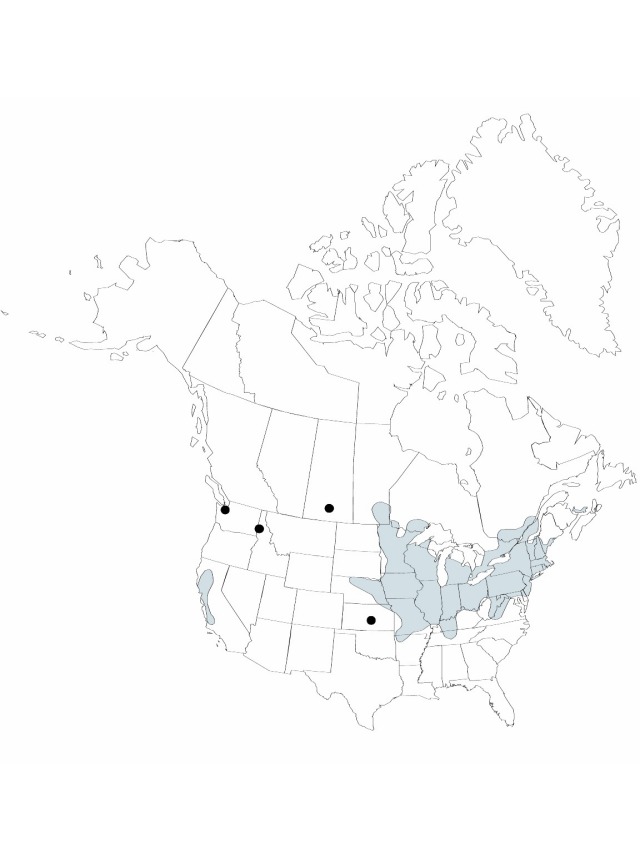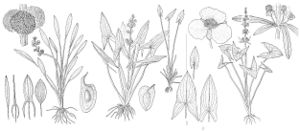Sagittaria rigida
Flora Americae Septentrionalis 2: 397. 1814.
Herbs, perennial, to 115 cm; rhizomes absent; stolons present; corms present. Leaves emersed or submersed; submersed leaves phyllodial, flattened, 30–70 cm, rarely widening into blade; emersed leaves phyllodial, flattened, or petiole triangular, 34–50 cm, blade linear to elliptic, rarely hastate to sagittate, 5–15 × 0.6–12 cm, basal lobes when present shorter than remainder of blade. Inflorescences racemes, of 2–8 whorls, emersed, 8–10 × 2–6 cm; peduncles 10–115 cm; bracts connate more than or equal to ¼ total length, ovate, 3–6 mm, delicate, not papillose; fruiting pedicels absent. Flowers to 3 cm diam.; sepals recurved, not enclosing flower; filaments dilated, shorter than anthers, pubescent; pistillate sessile to subsessile, without ring of sterile stamens. Fruiting heads 1–1.7 cm diam.; achenes obovoid to oblong, abaxially keeled, 2–3 × 1.3–1.6 mm, beaked; face not tuberculate, wings 1–2, ± entire, glands 1; beak lateral, recurved, 0.8–1.4 mm. 2n = 22.
Phenology: Flowering summer (Jul–Sep).
Habitat: Calcareous or brackish shallow water and shores of ponds, swamps, and rivers, occasionally in deep water
Elevation: 0–1000 m
Distribution

Man., Ont., Que., P.E.I., Sask., Ark., Calif., Conn., Del., D.C., Idaho, Ill., Ind., Iowa, Kans., Ky., Maine, Md., Mass., Mich., Minn., Mo., Nebr., N.H., N.J., N.Y., Ohio, Pa., R.I., Tenn., Vt., Va., Wash., W.Va., Wis.
Discussion
Selected References
None.
